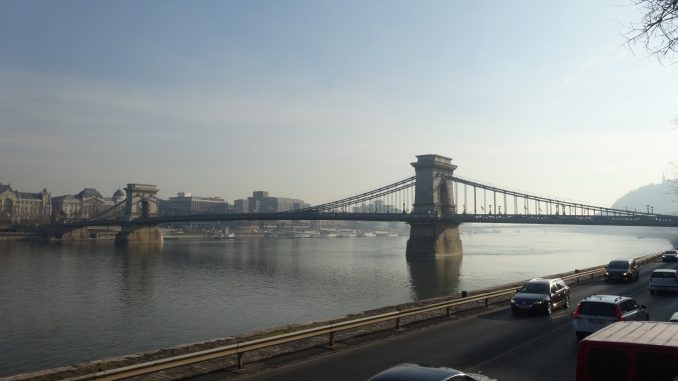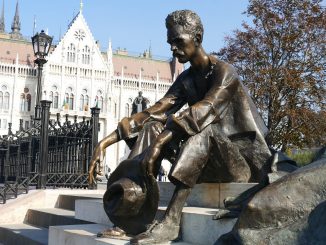
Named in honor of István Széchenyi and opened in 1849, the Széchenyi Chain Bridge (often simply called The Chain Bridge) is a suspension bridge that spans the River Danube between the western and eastern side of the city of Budapest. Covering the gap between Buda and Pest, the Chain Bridge was designed by Englishman William Tierney Clark and was the first permanent bridge to cross the Danube in Hungary. When the bridge was officially opened it was one of the largest bridges in the world coming in at just more 202m (663 feet).
When the Chain Bridge was constructed it was considered one of the world’s engineering wonders and since its construction it has had a major impact on the social and cultural lives of the residents of Budapest. The Chain Bridge was funded largely by the individual donations of Greek Merchant Georgics Sinas and in thanks for his donation his name was inscribed on the base of the Southwestern foundation.
In Many ways the Chain Bridge is similar to the Brooklyn Bridge in New York. Both bridges are adorned with cast iron decorations, and both bridges made it possible to reach further that previously possible in their respective cities. Much as the Brooklyn Bridge is associated as a symbol on New York, the Chain Bridge is tied with the history and future of Budapest.
The bridge is a good representative of what it means to be part of Budapest. Like the city itself, it is weathered by harsh cold winters and snow but serves it purpose without complaint. The facade is in need of repairs but the inner workings are strong Eastern European stock. The cast iron structure of the bridge was updated in 1914 but in 1945 during WWII the bridge was almost completely destroyed by retreating German soldiers during the Siege of Budapest. It only took five years for the bridge to reopen and it was again allowing passengers to get for Buda to Pest in 1949.
A plaque on the Pest side reads “To commemorate the only two surviving bridges designed by William Tierney Clark: The Széchenyi Chain Bridge over the Danube at Budapest and the suspension bridge over the Thames at Marlow, England.”


